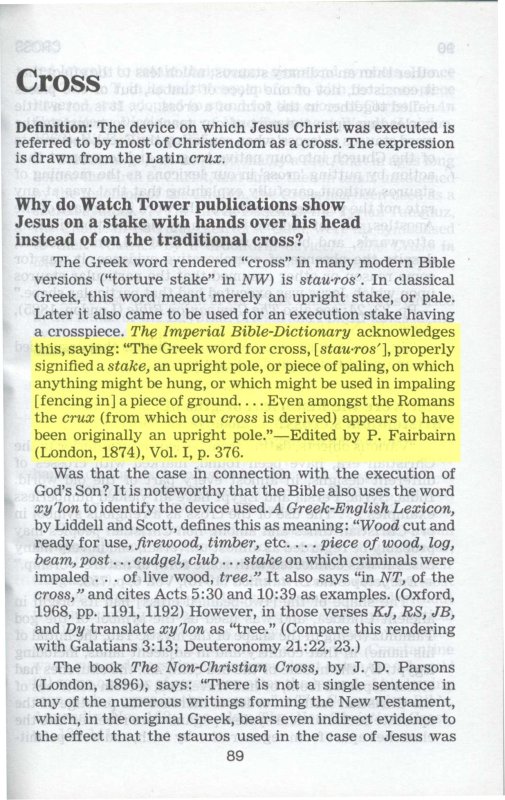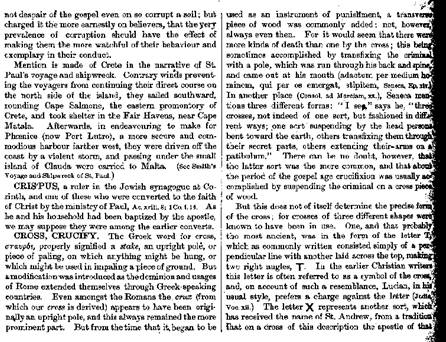A watcher: The point? my god man, every one who posted, has destroyed their VOW to Jehovah. So the VOW is null and void!!!!! So what is your point? No one has any guilt about a supposed VOW to Jehovah. [See article below from www.jwfacts.com ]
Research cross vs stake. You will find the intent to decieve!!!!! If it is not that clear to you I will spell it out for you. The WTBT$ to establish itself different than all other religions decided to cherry pick from the Imperial bible dictionary to lie about the cross. Then further research Roman executions in Jesus day. The cross was used extensively. I am not going to badger back and forth with you, you need to do research before posting any topics that has to do with the JW religion, especially on this site.
I think OUTLAW has you pegged correctly!!!
Affectionately: Brother of the Hawk ( I will surrender my mind no more, forever)
Deceptive Quoting
An indication that there is little support for a stake is the small number of collaborative sources the Watchtower refers to. More telling are the sources the Watchtower uses. The Imperial Bible-Dictionary is partially quoted to show that stauros means a stake. By partial quoting, it hides critical information that stauros was being used to refer to a cross in the first century.

"The Greek word rendered "cross" in many modern Bible versions ("torture stake" in NW) is stau·ros´. In classical Greek, this word meant merely an upright stake, or pale. Later it also came to be used for an execution stake having a crosspiece. The Imperial Bible-Dictionary acknowledges this, saying: "The Greek word for cross, [stau·ros´], properly signified a stake, an upright pole, or piece of paling, on which anything might be hung, or which might be used in impaling [fencing in] a piece of ground. . . . Even amongst the Romans the crux (from which our cross is derived) appears to have been originally an upright pole."-Edited by P. Fairbairn (London, 1874), Vol. I, p. 376." Reasoning from the Scriptures p.89
What exactly has this quote hidden by use of ellipses (...)? The full quote is:

"The Greek word for cross, (stauros), properly signified a stake, an upright pole, or piece of paling, on which anything might be hung, or which might be used in impaling (fencing in) a piece of ground. But a modification was introduced as the dominion and usages of Rome extended themselves through Greek-speaking countries.Even amongst the Romans, the crux (from which the word cross is derived) appears to have been originally an upright pole, and always remained the more prominent part. But from the time that it began to be used as an instrument of punishment, a traverse piece of wood was commonly added: not however always then.… There can be no doubt, however, that the later sort was the more common, and that about the period of the Gospel Age, crucifixion was usually accomplished by suspending the criminal on a cross piece of wood.
… But the commonest form, it is understood, was that in which the upright piece of wood was crossed by another near the top, but not precisely at it, the upright pole running above the other, thus "a cross" and so making four, not merely two right angles. It was on a cross of this form, according to the general voice of tradition, that our Lord suffered.
... It may be added that crucifixion was abolished around the time of Constantine, in consequence of the sacred associations which the cross had now gathered around it."
The Imperial Dictionary shows quite the opposite of what the Watchtower attempts to prove. Rather than supporting that crucifixion did not come until after Jesus death and that Constantine who introduced this pagan symbol, it specifically states that crosses were the prominent form of execution in Jesus day, and it was Constantine that put an end to them.

